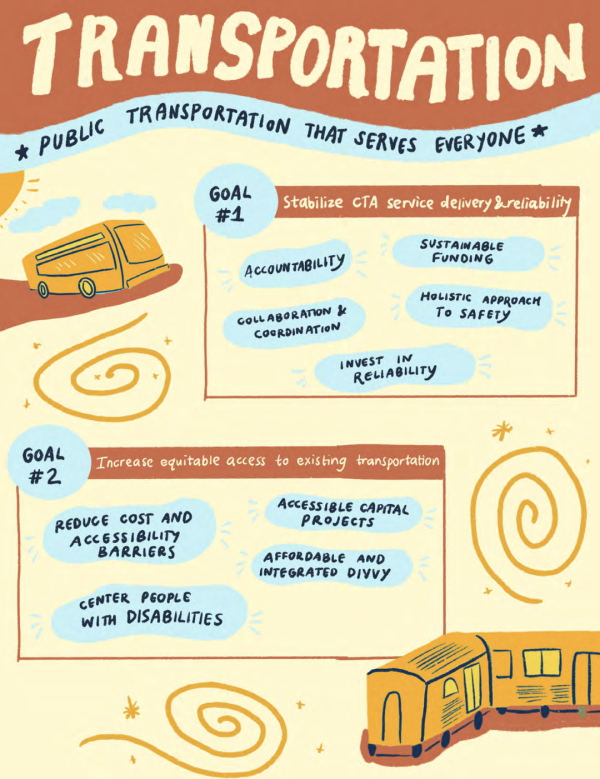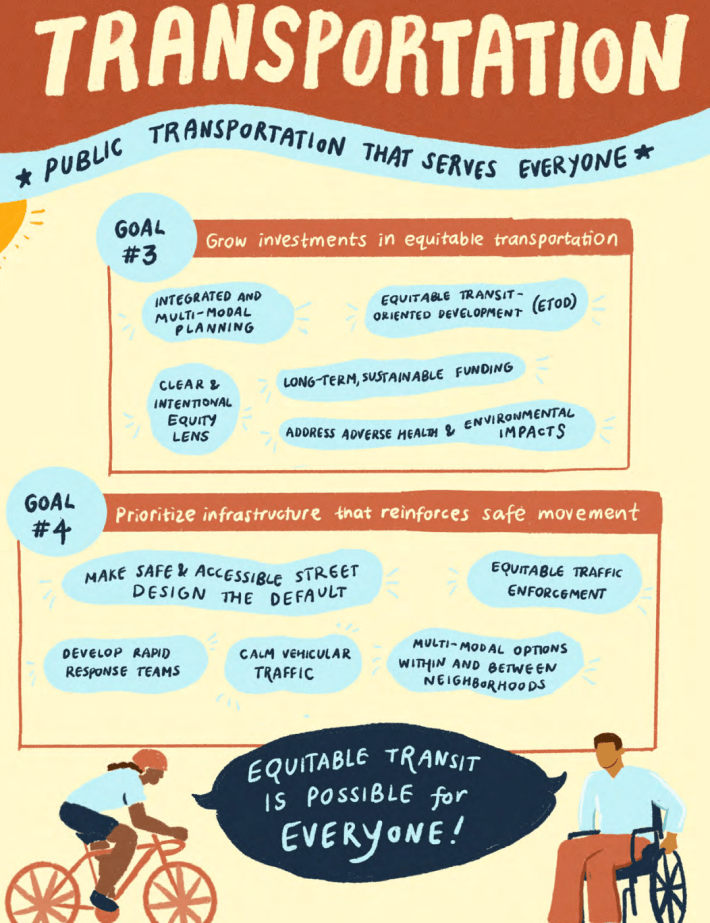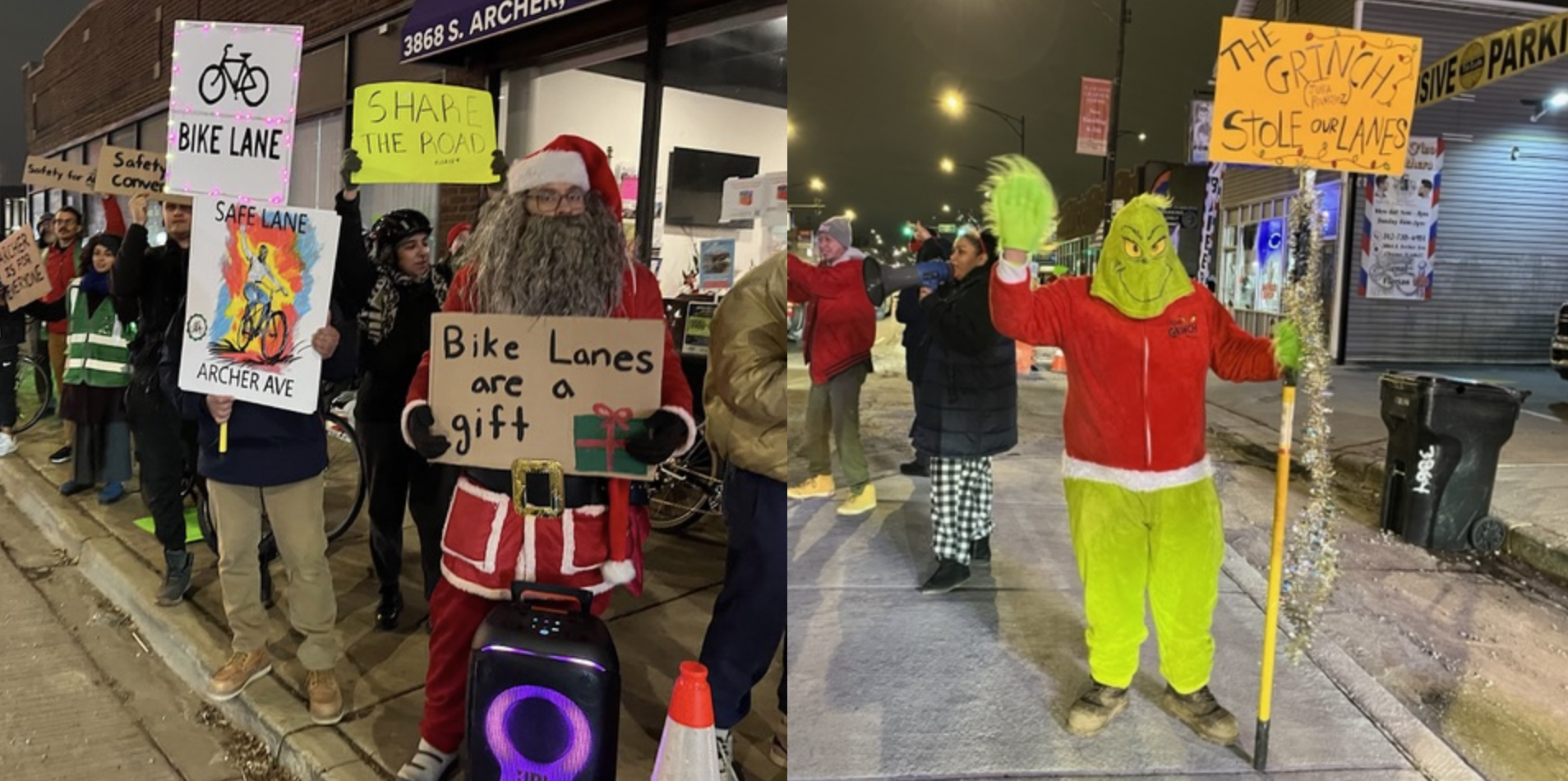Last week, Mayor Brandon Johnson’s transition team released a sweeping 223-page report of policy recommendations across multiple sectors, including transportation.
The transportation subcommittee that penned the corresponding section of the report is comprised of transit agency representatives, community stakeholders and advocates, including members of Active Transportation Alliance, Access Living, and Better Streets Chicago—three of six organizations that banded together as the Safe Streets for All Coalition, which formed to amplify the call for safety for people on foot and bikes in the months leading up to the mayoral election. The subcommittee is chaired by state representative Kam Buckner, whose mayoral run featured the most progressive and comprehensive transportation platform of the nine candidates.
The resulting twenty pages of transportation recommendations in the report reflect the priorities of a group committed to transforming our current car-centric roadways into a safer, healthier, more equitable system for all. An introductory context section acknowledges how the combined damage of transit disinvestment, destructive highways and a concentration of industrial freight in low-income Black and Brown neighborhoods has saddled residents with poorer health outcomes and less connection to the necessities of life. It also acknowledges the blow Covid-19 dealt to public transportation in ridership and revenue, and the urgent need for new, consistent sources of funding to restore and improve Chicago’s transit system.

The report lists four major transportation goals. The first regards the crisis at hand: stabilizing CTA service, which has been plagued by staffing shortages, unreliable information for riders and subpar sanitation and safety—real and perceived—since the start of the pandemic. Recommendations include new accountability systems, like a structure and cadence for CTA leadership to report to City Council (bafflingly, this doesn’t already exist) and the creation of a deputy mayor of transportation position to coordinate projects across city departments and agencies.
CTA, Metra and Pace anticipate a combined $730 million budget shortfall in 2026, when federal pandemic relief funds run out. The report recommends seeking state and federal dollars to avert this fiscal cliff without raising fares for riders. When it comes to improving safety and sanitation, the report recommends a “holistic approach”: adding transit ambassadors to CTA staff and responding to non-violent emergencies with treatment-not-trauma methods.
The report also recommends improving CTA service by building a citywide Bus Rapid Transit network—improvements like dedicated bus lanes, priority signals at intersections and rear-door boarding that have been proven to speed up buses. Chicago lags far behind other cities in BRT and the strategy has been championed by the Safe Streets for All Coalition to improve the reliability of CTA buses and encourage ridership.

The second page of the "Transportation" section of the report.
The second goal is increasing equitable access to our current transit system, particularly for people with disabilities and low-income residents. Recommendations include free fares for students and seniors, plowing snow from the sidewalks and completing the Red Line extension south to 130th Street.
The third goal calls for new infrastructure in disinvested areas on the South, Southwest and West sides. Development of multimodal projects and transit hubs that co-locate several car-free options, investing in equitable transit-oriented development, electrifying the CTA bus fleet, and better engaging community members in the planning process all fall under this category.
The final goal is to prioritize walking, biking and transit infrastructure at large. This would be a seismic shift of the longstanding road design mindset—move-the-most-cars-as-fast-as-possible—to making environmentally sustainable and physically active means of getting around more convenient, safe and attractive. Recommendations under this goal mirror a lot of the Safe Streets for All Coalition platform points presented to mayoral candidates last winter. This includes lowering speed limits to 20 mph on arterial streets and 10 mph on residential streets, limiting commercial traffic on residential streets, restricting right turns on red, developing a network of neighborhood slow streets, and building a network of connected, protected bike lanes.
In a recent blog post, Active Transportation Alliance heralded the report as “important affirmation of our movement’s agenda” and that, “Translating these recommendations into actual policies, plans, and projects will take persistent pressure from all of us. However, the transition report provides a strong foundation from which those of us fighting for equitable and sustainable transportation can build a cleaner and healthier future.”
Read the 2023 Mayoral Transition Report here.

Did you appreciate this post? Please consider making a tax-deductible donation.




